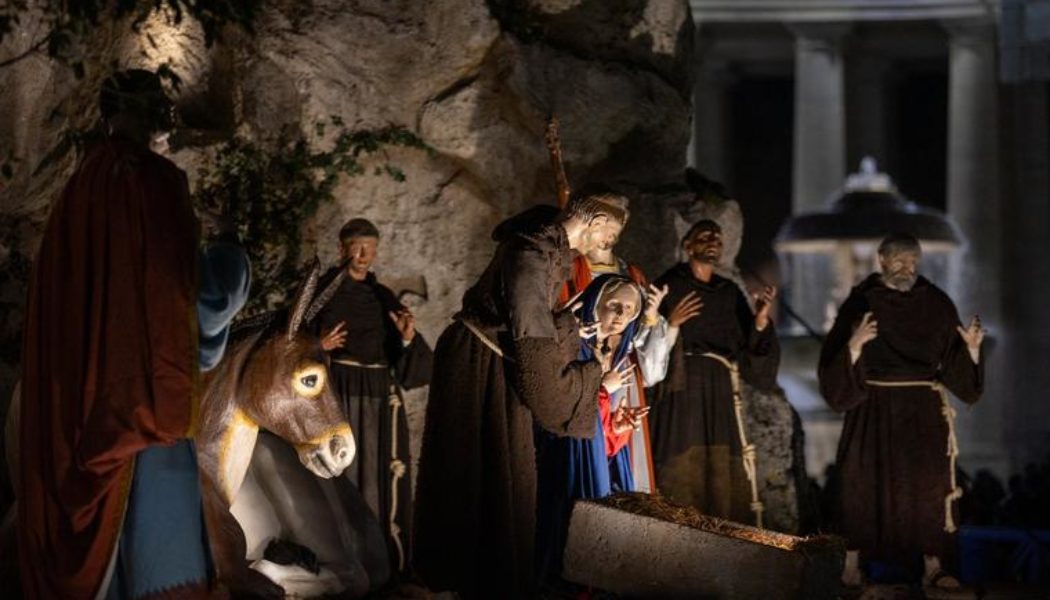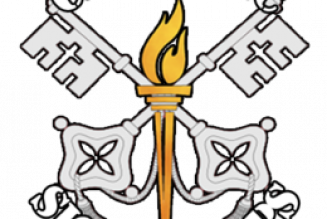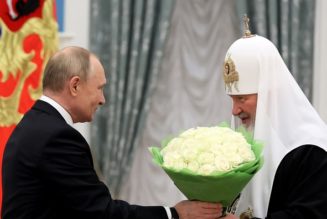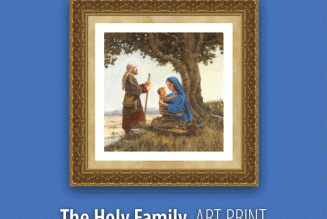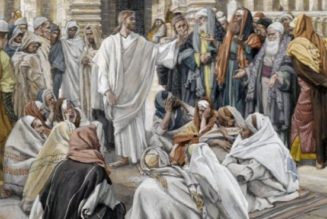
Pope Francis marked his 87th birthday on Sunday with a party and cake for children before he kept his weekly appointment for the Sunday Angelus. The children got special attention there too, as many of them had brought the Christ Child figures from their Nativity scenes for the Holy Father to bless. St. John Paul II began the custom of blessing on Gaudete Sunday (Third Sunday of Advent) the Baby Jesus figurines that will be placed in crèche scenes at Christmas. Both Benedict XVI and Francis have continued the custom, and it has also spread around the world.
Children in St. Peter’s Square may have paused to look at the Vatican’s Nativity scene, set up at the foot of the obelisk and awaiting its own Baby Jesus at Christmas. Some may have wondered why the depictions of the “Three Kings” were dressed so plainly. In fact, they are not kings, but Franciscan friars. And there is a fourth, directly alongside the (still-empty) manger, looking on in wonder — St. Francis of Assisi himself.
This year marks the 800th anniversary of the Nativity scene, one of the most beloved Christmas traditions. In 1223, St. Francis had the idea, after previously visiting the Holy Land, to recreate the scene at Bethlehem for the instruction and devotion of the people. He asked three of his friars to make the arrangements in the small town of Greccio. It’s quite possible that the Nativity scene tradition is the greatest impact St. Francis had on the Christian faithful, despite his many other significant achievements.
This year’s Vatican scene commemorates the 800th anniversary by including Francis and the three friars, as well as the then-mayor of Greccio, Giovanni Velita, with his wife, Alticama.
The Holy Father’s devotion to Francis of Assisi was evident from the beginning of his pontificate. He took his papal name in honor of the Poverello. He has published three encyclicals, the first of which was written by Pope Benedict XVI (Lumen Fidei). His own two take their titles from the writings of St. Francis: Laudato Si and Fratelli Tutti.
He wrote a beautiful apostolic letter, Admirabile Signum, on the “meaning and importance of the Nativity scene” intended to encourage “the custom of setting it up in the workplace, in schools, hospitals, prisons and town squares.”
Dated Dec. 1, 2019, Pope Francis traveled to Greccio himself to sign the letter.
As Pope Francis blessed the bambinelli on his birthday this year, a suitable birthday gift to him would be a reading of Admirabile Signum.
Admirabile Signum (“Enchanting Sign,” in the official Vatican translation), holds up the Nativity scene as an laudable example of piety and biblical culture. The apostolic letter treats the crèche, “which encapsulates a wealth of popular piety,” as a particularly effective means of making the Scriptures come alive, especially for children but not only for them.
“Children — but adults too! — often love to add to the Nativity scene other figures that have no apparent connection with the Gospel accounts,” writes the Holy Father. “Yet, each in its own way, these fanciful additions show that in the new world inaugurated by Jesus there is room for whatever is truly human and for all God’s creatures. From the shepherd to the blacksmith, from the baker to the musicians, from the women carrying jugs of water to the children at play: [A]ll this speaks of the everyday holiness, the joy of doing ordinary things in an extraordinary way, born whenever Jesus shares his divine life with us.”
Throughout 2023, the Holy Father has repeatedly exclaimed todos, todos, todos or tutti, tutti, tutti, emphasizing the Jesus came for all and invites all into his Church. The Nativity scene’s inclusion of all the various characters Pope Francis mentions is a vivid example of just that.
In addition to artistic creativity, the Nativity scene of Greccio was a profound expression of deep biblical culture. Francis insisted upon including live animals, but not only the sheep — as one might have expected. He wanted an ox and a donkey. Why? We read about the manger (Luke 2:7), but there is nothing about the ox and donkey.
For that, Francis reached back to Isaiah, which we read often in Advent. At the beginning of the prophetic book, it is written, “The ox knows its owner, and the ass its master’s crib; but Israel does not know; my people does not understand” (Isaiah 1:3). By putting these animals near the manger, Francis was teaching that the Christ Child is the fulfillment of the prophecies, but we often don’t recognize him when he comes.
The ox and donkey suggest another 13th-century connection, though one unknown in 1223. St. Thomas Aquinas — born the year after the first Nativity scene — was large and lumbering, and thus given the nickname the “dumb ox.” St. Francis, legend has it, on his deathbed, thanked his donkey for the services it had given him, and the donkey apparently wept. The ox and the donkey perhaps can stand in for the saints, St. Thomas and St. Francis, the friends of the Lord.
That first Nativity scene at Greccio did not have statues. There was no statue of the Christ Child — and, of course, no prior blessing of the bambinelli ! — to place in the manger.
“On 25 December, friars came to Greccio from various parts, together with people from the farmsteads in the area, who brought flowers and torches to light up that holy night,” explains Pope Francis in Admirabile Signum. “When Francis arrived, he found a manger full of hay, an ox and a donkey. All those present experienced a new and indescribable joy in the presence of the Christmas scene. The priest then solemnly celebrated the Eucharist over the manger, showing the bond between the Incarnation of the Son of God and the Eucharist.”
At Christmas Mass, which is often preceded or followed by a procession to the Nativity scene, the Baby Jesus is placed in the manger. But it remains only a statue. At the Holy Mass itself, Jesus becomes real food, his Body placed not in the manger, but in the mouths of the faithful.
That the Word became flesh is taught by St. John’s Gospel (1:14). That the Word became food is indicated by the manger of St. Luke’s Gospel (2:7). The Nativity scene with its feeding box reminds us vividly of this. It’s a truth that attracts even those who know nothing of the Incarnation or the Eucharist.
Eight centuries after Greccio, the Franciscan friars have rejoined the Nativity scene themselves. It’s a good year to include St. Francis in those Christmas scenes set up in parishes, schools and at home.
